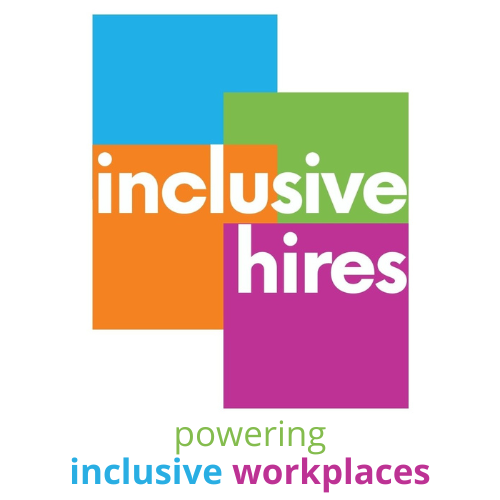
Workplace stress is one of the biggest threats to employee health, productivity, and morale. When left unaddressed, it leads to burnout, disengagement, and high turnover. But with the right strategies, employers can not only reduce stress but also build a more inclusive, thriving, and psychologically safe work culture.
April is Stress Awareness Month. Here are 10 powerful ways organisations can help reduce employee stress and support wellbeing, with a focus on psychological safety, belonging, and equity.
1. Prioritise Psychological Safety 🛡️
Psychological safety is the cornerstone of a healthy work environment. When people feel safe to speak up, admit mistakes, or offer ideas without fear of punishment, innovation thrives – and stress falls.
💡 Tip: Train managers to encourage questions and feedback, and respond supportively. Recognise that safety starts at the top.
2. Foster a Culture of Belonging and Inclusion ✨
Feeling like you belong is a basic human need – and a powerful antidote to workplace stress. People who feel excluded or marginalised often experience higher stress and disengagement.
🎯 Focus on equity: Ensure that all employees – regardless of background, role, or identity – have access to opportunities and the support they need to thrive. Representation in leadership and inclusive decision-making processes are also key.
💬 What you can do:
- Celebrate diverse perspectives.
- Run regular inclusion workshops.
- Involve employee resource groups in culture-building.
3. Respect Work-Life Boundaries ⏰
Blurring the lines between work and personal life can quickly lead to burnout. Employees need time to rest, recharge, and show up fully each day.
📆 Action steps:
- Avoid messaging staff outside work hours.
- Promote time off without guilt.
- Model healthy boundaries from the leadership level.
4. Offer Growth and Development Opportunities 📈
A lack of growth can feel stifling and demoralising. When employees have a clear path to advance and upskill, they’re more motivated, focused, and resilient to stress.
📚 Invest in:
- Learning and development programmes.
- Career progression paths.
- Mentorship and cross-training.
5. Promote Mental Health Support 🧘
Even in the most supportive environments, stress happens. Accessible, stigma-free mental health resources are crucial.
🛠️ Consider providing:
- Employee Assistance Programmes (EAPs).
- Mental health days.
- Wellness app subscriptions (like Calm or Headspace).
- Mental health first aid training for leaders.
6. Encourage Open Communication 💬
Anxiety often arises when employees feel unheard or uncertain about what’s happening in the organisation. Open, transparent communication fosters trust and calm.
📣 Tactics that work:
- Regular check-ins and all-hands updates.
- Anonymous suggestion boxes or surveys.
- Manager training in active listening.
7. Improve Physical Work Environments 🪑
Workspaces have a direct impact on stress levels. Whether remote or in-office, a space that promotes comfort, privacy, and focus is essential.
🖥️ Tips:
- Provide ergonomic tools (e.g. chairs, desks).
- Offer remote setup stipends.
- Optimise lighting and noise levels in shared spaces.
8. Recognise and Reward Effort 🎉
Appreciation is a powerful stress-reducer. It builds morale, creates meaning, and reminds people their work matters.
🏆 Easy wins:
- Shout-outs in meetings or newsletters.
- Peer-to-peer recognition platforms.
- Small tokens of gratitude like gift cards or handwritten notes.
9. Encourage Physical Activity and Breaks 🏃
Movement and rest are essential for mental clarity and emotional resilience. Yet employees often feel guilty taking breaks.
🚶♀️ What you can offer:
- Midday stretch or walking groups.
- Standing desks or wellness challenges.
- Scheduled no-meeting blocks for decompression.
10. Train Leaders to Recognise and Manage Stress 🤝
The behaviour of leaders sets the tone for wellbeing across the team. Empathetic, informed leadership is essential in reducing stress and increasing retention.
🎓 Leadership development should include:
- Burnout prevention strategies.
- Emotional intelligence training.
- How to spot early signs of employee stress.
📊 How to Measure and Monitor Employee Stress
Improving wellbeing starts with understanding the current state. Regularly measuring employee stress levels allows organisations to intervene early and build effective, responsive strategies.
📈 Tools to use:
- Employee engagement surveys with stress and wellness questions.
- Pulse surveys for real-time insights.
- One-on-one check-ins with open-ended wellbeing prompts.
- HR analytics tracking time-off patterns, attrition, and productivity dips.
💡 Final Thoughts
Employee wellbeing isn’t just a perk – it’s a performance strategy. A psychologically safe, inclusive, and supportive environment allows people to show up as their best selves.
When employers take intentional steps to reduce stress and invest in whole-person wellbeing, the returns are clear: higher engagement, better retention, stronger collaboration – and a workplace where everyone can thrive.
Download our ’10 Ways to Reduce Employee Stress and Improve Wellbeing at Work’ infographic here >>>
~ Inclusive Recruiting powering Inclusive Workplaces
Continued conversations nurture better understanding and allyship. We can help you facilitate these conversations and help you take a more impactful approach to building a truly inclusive workplace!
Sign your team up today for our one of our inclusion training workshops.

